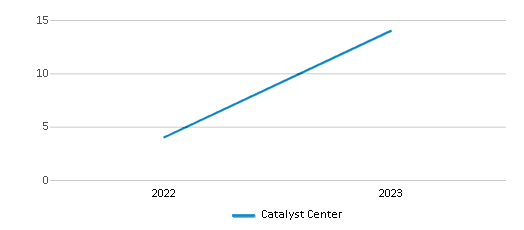Quick Stats (2025)
- Grades: 9-12
- Source: National Center for Education Statistics (NCES), UT Dept. of Education
School Overview
The teacher population of 14 teachers has grown by 250% over five school years.
Grades Offered
Grades 9-12
Total Students
n/a
Total Classroom Teachers
14 teachers

School Rankings
Student : Teacher Ratio
n/a
21:1
School Statewide Testing
School District Name
Source: National Center for Education Statistics (NCES), UT Dept. of Education
Profile last updated: 02/09/2025
Frequently Asked Questions
What grades does Catalyst Center offer ?
Catalyst Center offers enrollment in grades 9-12
What school district is Catalyst Center part of?
Catalyst Center is part of Davis School District.
School Reviews
2 9/8/2023
I love it here! I''ve done the graphics program and am currently enrolled in the video production. The school is very new so it''s not quite polished yet, but the environment is very friendly and very exciting. We have access to lots of technology and opportunities here. I highly recommend it!
Review Catalyst Center. Reviews should be a few sentences in length. Please include any comments on:
- Quality of academic programs, teachers, and facilities
- Availability of music, art, sports and other extracurricular activities
Recent Articles

What Is A Charter School?
Explore the world of charter schools in this comprehensive guide. Learn about their history, how they operate, and the pros and cons of this educational innovation. Discover key facts about charter schools, including admission policies, demographics, and funding, as well as what to look for when considering a charter school for your child.

10 Reasons Why High School Sports Benefit Students
Discover the 10 compelling reasons why high school sports are beneficial for students. This comprehensive article explores how athletics enhance academic performance, foster personal growth, and develop crucial life skills. From improved fitness and time management to leadership development and community representation, learn why participating in high school sports can be a game-changer for students' overall success and well-being.

February 05, 2025
Understanding the U.S. Department of Education: Structure, Impact, and EvolutionWe explore how the Department of Education shapes American education, from its cabinet-level leadership to its impact on millions of students, written for general audiences seeking clarity on this vital institution.









